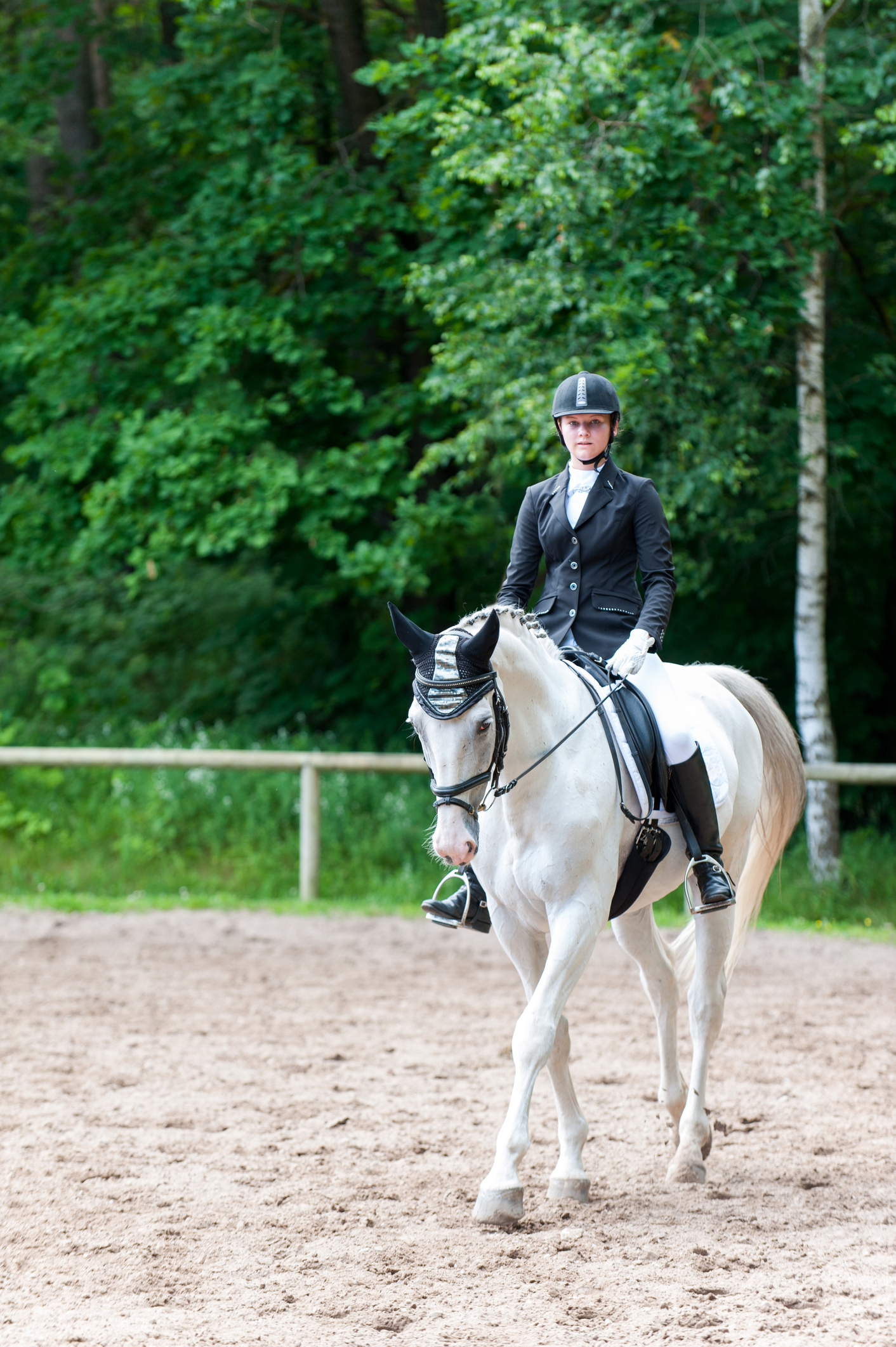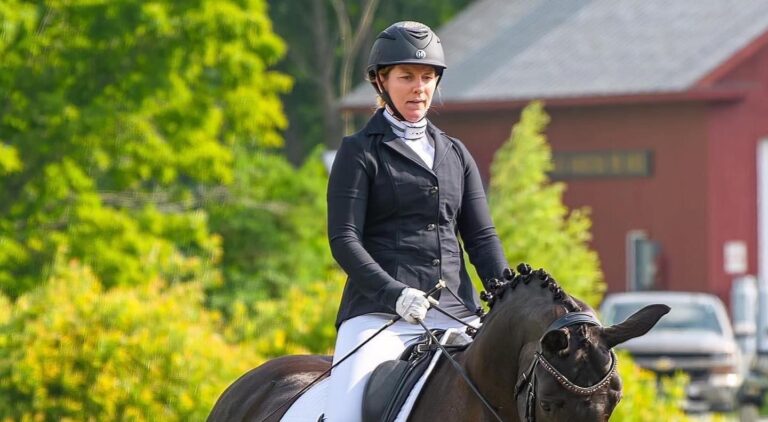At a competition, many riders feel that it is not easy for an average-moving horse to compete against the big warmblood types. But, if your horse is less than perfect, don’t be discouraged. By improving his obedience and correctness, you can improve your score against all competition.

There are several movements in every dressage test where obedience and correctness count just as much as the big gaits. Halts, rein-backs, transitions and especially pirouettes at the walk (turn on the haunches) come to mind.
Doing correct pirouettes at a show begins with good training at home. Here is the way I train my horse to perform a good pirouette at the walk, so when I’m at a show, I can get those extra points. A pirouette or half turn on the haunches is required beginning at Second Level. But you can begin to work on your walk pirouettes as soon as your horse can do a good shoulder-in and haunches-in on a straight line.
Once these exercises are going well, I ask for them on a 10-meter circle. In walk, I ask for shoulder-in on the quarterline to get my horse bending around my inside leg. Then I begin the circle. While keeping his shoulders where they are, I move his haunches slightly in toward the middle of the circle. Although I may allow the tempo of the walk to slow a bit until my horse finds his balance, I keep the circle large and the angle of the haunches-in small so the horse never learns that he can pivot around an unmoving inside hind leg.
I’m careful to use my outside leg only a few inches behind the girth. If the horse doesn’t move his quarters in when I ask politely, moving my leg farther back won’t help; instead, I tap his quarters with the whip in my outside hand. Gradually I decrease the size of the circle until the horse’s hind feet make a circle about two feet in diameter.
Only then do I attempt the walk pirouette from a straight line.
I approach the walk pirouette in shoulder-fore, which helps to keep the inside bend. I half halt and concentrate on turning the shoulders. My inside, leading rein indicates to the horse where he is to turn—my outside rein keeps the steps short and collected. My outside leg merely keeps the hindquarters from swinging out. Because I allow the horse to walk forward and sideways, my first pirouettes are nothing more than 10-meter half circles with the haunches in. And that’s OK because the larger the circle, the easier it is for the horse to keep the walk active. At least one or two strides before completing the turn, I put my inside leg on at the girth, apply enough pressure to straighten him, ride forward and pat my horse. Over time, I gradually reduce the size of the turn. I find this approach helps me avoid three common problems I see as a judge: the “stuck” inside hind leg, the quarters swinging out and the loss of bend.
When you practice, remember you, as a rider, have to do your part. To ride a walk pirouette, sit centered, weight slightly more on the inside seat bone, outside shoulder well forward. Your outside leg should be just behind the girth and your inside leg on the horse at the girth.
And take hope: You don’t have to have the fanciest moving, most expensive horse to score an eight, nine or 10 on a walk pirouette. It’s a movement any horse with proper training can do well. So practice perfectly—and go for those high scores.
This article first appeared in the May 2000 issue of Dressage Today.
Donna Richardson rode her 8-year-old Dutch Warmblood, Jazzman, to a team gold medal at the 1999 Pan-American Games. She is an AHSA “R” judge. When not working with her horses, Richardson is an emergency-room physician in San Diego, California.











